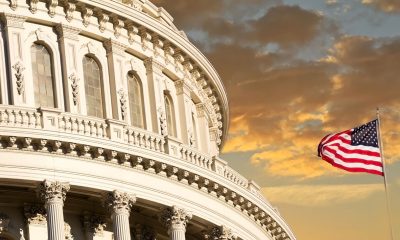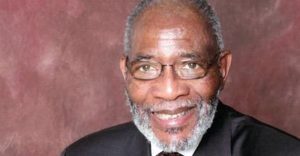Activism
Frontline Homelessness Workers Have Diverging Views on the Citywide Crisis
Between January to July, the Healthy Streets team, a coordinated response department for homelessness, engaged with 2,961 people living on the streets, but less than a third of those engagements resulted in placements or referrals. Anecdotal reporting across the region suggests that many refuse shelter because facilities take away self-autonomy to go and come as you please, restricts possessions and visitors, and sometimes can be more dangerous and hostile than living on the streets.

By Magaly Muñoz
San Francisco has ramped up its response to the homelessness crisis in the city, but frontline workers who see the issue daily are butting heads on how severe the problem really is.
Randy Shaw, co-founder of the Tenderloin Housing Clinic in San Francisco, told the Post that the media and local activists are not accurately portraying how the city’s homeless people are treated.
Shaw’s nonprofit provides legal and supportive services for low-income Tenderloin residents struggling with housing. The district has one of the worst issues with homeless encampments in the city.
He said advocates are not honest about the number of people refusing shelter everyday and that the bigger problem with homelessness is drug related. He claimed the reason people are refusing shelter is because they are not allowed to use drugs in those facilities and would rather stay on the streets.
Shaw said he doesn’t understand why people come to San Francisco in the first place if they know they can’t afford it and instead stick around to pitch tents and live on the sidewalk.
“If you don’t feel comfortable in a shelter and you don’t have any money, what are you doing here? Why did you come to San Francisco?” Shaw said.
In July, the city offered 469 individuals shelter and services but 355 people declined help, according to SF’s Healthy Streets data. 114 people accepted and were referred to residential placements.
Between January to July, the Healthy Streets team, a coordinated response department for homelessness, engaged with 2,961 people living on the streets, but less than a third of those engagements resulted in placements or referrals.
Anecdotal reporting across the region suggests that many refuse shelter because facilities take away self-autonomy to go and come as you please, restricts possessions and visitors, and sometimes can be more dangerous and hostile than living on the streets.
Shaw also disagrees that criminalizing homeless people by arresting or fining them is somehow worse than allowing crime rates to rise or letting residents feel unsafe in their neighborhoods.
But advocates on the other side of the argument strongly disagree with this viewpoint and how the city is handling the crisis.
“It’s not okay to talk about an entire class of people who are too poor to afford to rent, and then superimpose these kinds of criminal activities on them,” Jennifer Friedenbach said.
Friedenbach, executive director of the Coalition on Homelessness, said very few people who enter homelessness are on drugs but they may fall into addiction once they are living on the streets.
One-third of people who are homeless have problems with alcohol and/or drugs, according to the American Addictions Center. The Center cites accessibility, self-medication, and prior issues with mental health as factors for substance abuse in homeless people.
Friedenbach told the Post that the most effective way to help people is to offer substance abuse and trauma treatment so that those struggling can begin healing and address the negative consequences drugs have had on their lives.
She emphasized the need for more transitional or permanent supportive housing and criticized the boost in encampment sweeps in the city.
“We’re talking about arresting people for lodging, which is basically sleeping, which is something that every human being needs to do. In order to address that issue people need a safe and decent place to call home,” Friedenbach said.
Mayor London Breed has recently signed an executive order that directs city workers to offer transportation tickets to homeless people before offering shelter and services. The order is meant to remove people who are not originally San Francisco residents and help them return to their family or friends so that remaining resources can go to city natives.
According to data from the Point In Time count, 40% of homeless people surveyed responded that they either came to San Francisco from another California county or out of state and 37% of those who had been previously housed said they had been living in the city for less than a year when they became homeless.
While it remains to be seen if bussing people out of the city will reduce the homelessness population, Friedenbach said much of the conversations surrounding homelessness are being used for political gain.
“This is a way to create a political wedge and demonize the [homeless] population and shift blame from the policymakers’ shoulders onto the backs of homeless people themselves.”
Activism
Oakland Post: Week of November 26 – December 2, 2025
The printed Weekly Edition of the Oakland Post: Week of November 26 – December 2, 2025

To enlarge your view of this issue, use the slider, magnifying glass icon or full page icon in the lower right corner of the browser window.
Activism
Oakland Post: Week of November 19 – 25, 2025
The printed Weekly Edition of the Oakland Post: Week of November 19 – 25, 2025
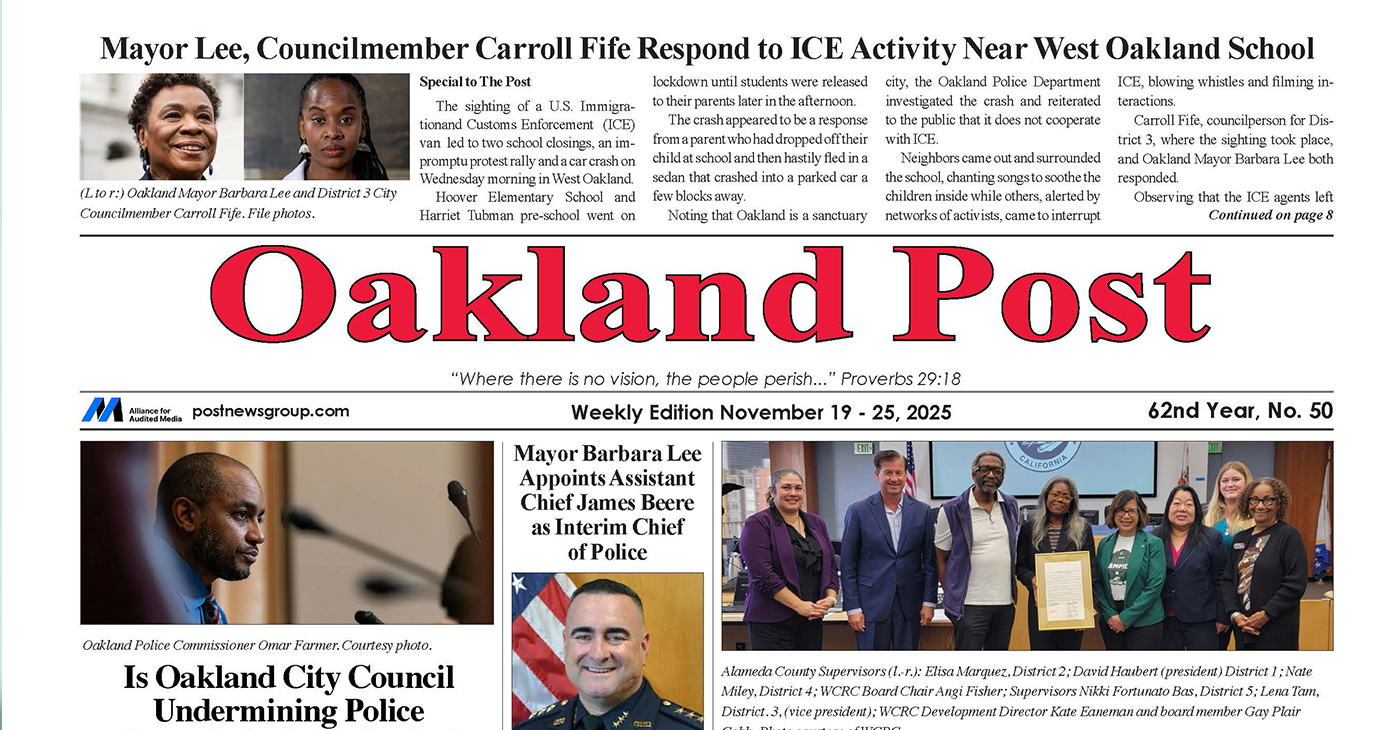
To enlarge your view of this issue, use the slider, magnifying glass icon or full page icon in the lower right corner of the browser window.
Activism
IN MEMORIAM: William ‘Bill’ Patterson, 94
Bill devoted his life to public service and education. In 1971, he became the founding director for the Peralta Community College Foundation, he also became an administrator for Oakland Parks and Recreation overseeing 23 recreation centers, the Oakland Zoo, Children’s Fairyland, Lake Merritt, and the Henry J. Kaiser Convention Center.
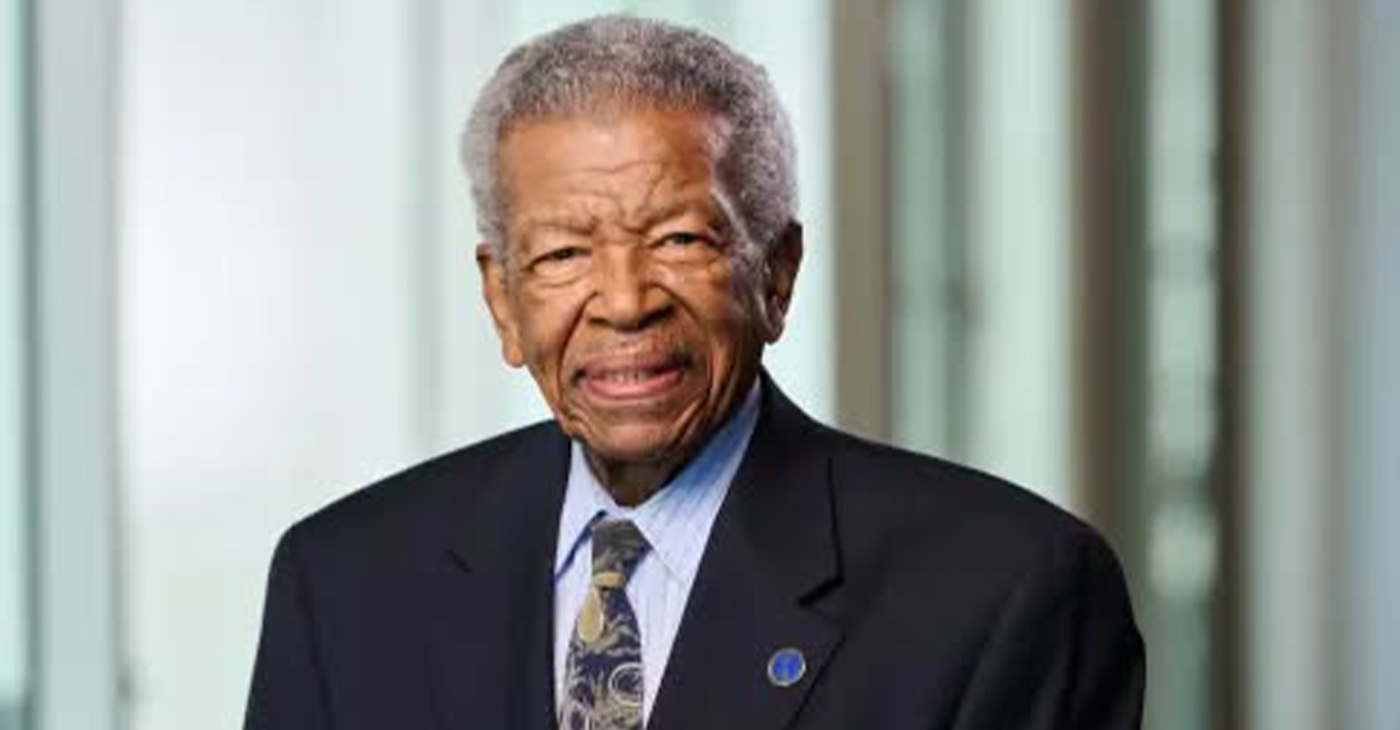
William “Bill” Patterson, 94, of Little Rock, Arkansas, passed away peacefully on October 21, 2025, at his home in Oakland, CA. He was born on May 19, 1931, to Marie Childress Patterson and William Benjamin Patterson in Little Rock, Arkansas. He graduated from Dunbar High School and traveled to Oakland, California, in 1948. William Patterson graduated from San Francisco State University, earning both graduate and undergraduate degrees. He married Euradell “Dell” Patterson in 1961. Bill lovingly took care of his wife, Dell, until she died in 2020.
Bill devoted his life to public service and education. In 1971, he became the founding director for the Peralta Community College Foundation, he also became an administrator for Oakland Parks and Recreation overseeing 23 recreation centers, the Oakland Zoo, Children’s Fairyland, Lake Merritt, and the Henry J. Kaiser Convention Center.
He served on the boards of Oakland’s Urban Strategies Council, the Oakland Public Ethics Commission, and the Oakland Workforce Development Board.
He was a three-term president of the Oakland branch of the NAACP.
Bill was initiated in the Gamma Alpha chapter of Kappa Alpha Psi Fraternity.
In 1997 Bill was appointed to the East Bay Utility District Board of Directors. William Patterson was the first African American Board President and served the board for 27 years.
Bill’s impact reached far beyond his various important and impactful positions.
Bill mentored politicians, athletes and young people. Among those he mentored and advised are legends Joe Morgan, Bill Russell, Frank Robinson, Curt Flood, and Lionel Wilson to name a few.
He is survived by his son, William David Patterson, and one sister, Sarah Ann Strickland, and a host of other family members and friends.
A celebration of life service will take place at Henry J. Kaiser Convention Center (Calvin Simmons Theater) on November 21, 2025, at 10 AM.
His services are being livestreamed at: https://www.facebook.com/events/1250167107131991/
In lieu of flowers, donations can be made to the Euradell and William Patterson scholarship fund TBA.
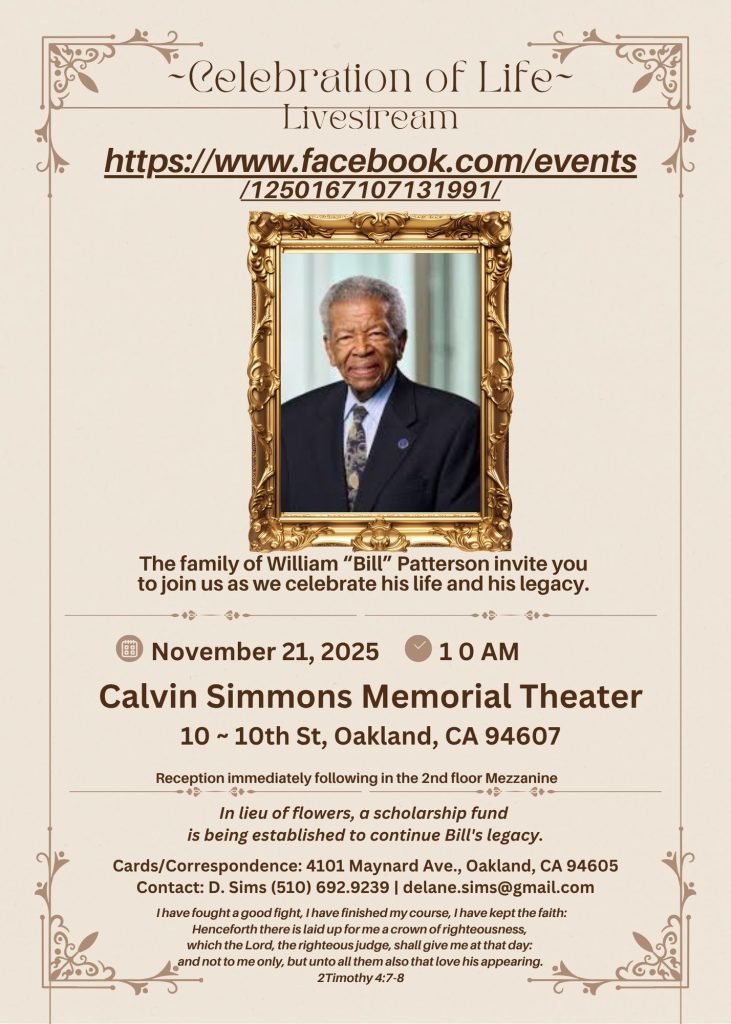
-

 Activism4 weeks ago
Activism4 weeks agoOakland Post: Week of November 12 – 18, 2025
-

 Activism3 weeks ago
Activism3 weeks agoIN MEMORIAM: William ‘Bill’ Patterson, 94
-

 Activism4 weeks ago
Activism4 weeks agoHow Charles R. Drew University Navigated More Than $20 Million in Fed Cuts – Still Prioritizing Students and Community Health
-

 Bay Area4 weeks ago
Bay Area4 weeks agoNo Justice in the Justice System
-

 #NNPA BlackPress3 weeks ago
#NNPA BlackPress3 weeks agoLewis Hamilton set to start LAST in Saturday Night’s Las Vegas Grand Prix
-

 #NNPA BlackPress3 weeks ago
#NNPA BlackPress3 weeks agoBeyoncé and Jay-Z make rare public appearance with Lewis Hamilton at Las Vegas Grand Prix
-

 Activism2 weeks ago
Activism2 weeks agoOakland Post: Week of November 19 – 25, 2025
-

 #NNPA BlackPress4 weeks ago
#NNPA BlackPress4 weeks agoThe Perfumed Hand of Hypocrisy: Trump Hosted Former Terror Suspect While America Condemns a Muslim Mayor









